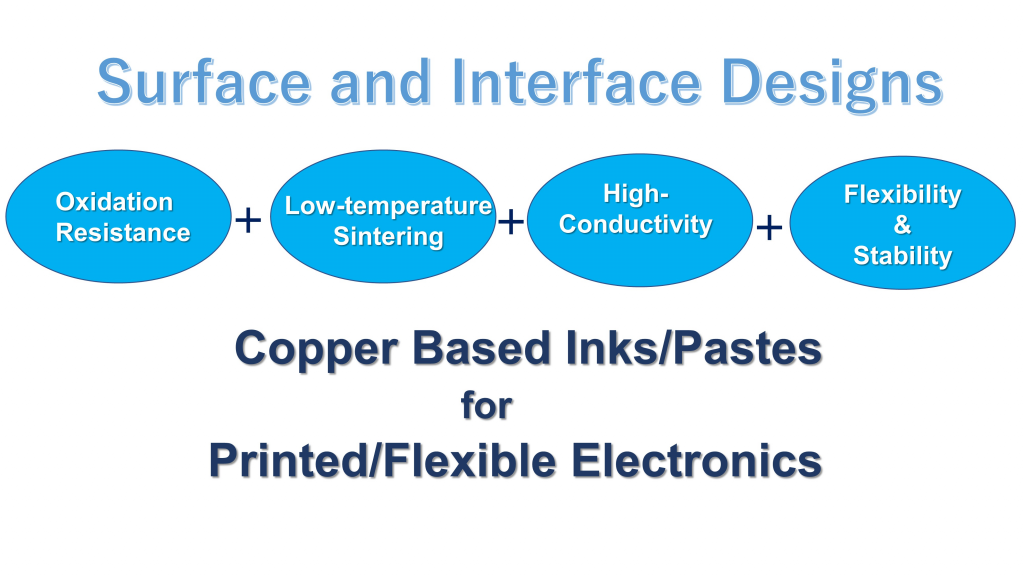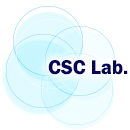印刷技術を使って電子部品やデバイスを製造するプリンタブルエレクトロニクス(PE)は,フレキシブルデバイスなどの電子デバイス製造分野において革新的な技術といえ、IoT社会実現に向けた重要なニューテクノロジーとして期待されています。 本レビュー論文では、PE用途向けの導電性銅インク/ペースト設計の最近の動向をまとめました。

Silver (Ag), gold (Au), and copper (Cu) have been utilized as metals for fabricating metal-based inks/pastes for printed/flexible electronics. Among them, Cu is the most promising candidate for metal-based inks/pastes. Cu has high intrinsic electrical/thermal conductivity, which is more cost-effective and abundant, as compared to Ag. Moreover, the migration tendency of Cu is less than that of Ag. Thus, recently, Cu-based inks/pastes have gained increasing attention as conductive inks/pastes for printed/flexible electronics. However, the disadvantages of Cu-based inks/pastes are their instability against oxidation under an ambient condition and tendency to form insulating layers of Cu oxide, such as cuprous oxide (Cu2O) and cupric oxide (CuO). The formation of the Cu oxidation causes a low conductivity in sintered Cu films and interferes with the sintering of Cu particles. In this review, we summarize the surface and interface designs for Cu-based conductive inks/pastes, in which the strategies for the oxidation resistance of Cu and low-temperature sintering are applied to produce highly conductive Cu patterns/electrodes on flexible substrates. First, we classify the Cu-based inks/pastes and briefly describe the surface oxidation behaviors of Cu. Next, we describe various surface control approaches for Cu-based inks/pastes to achieve both the oxidation resistance and low-temperature sintering to produce highly conductive Cu patterns/electrodes on flexible substrates. These surface control approaches include surface designs by polymers, small ligands, core-shell structures, and surface activation. Recently developed Cu-based mixed inks/pastes are also described, and the synergy effect in the mixed inks/pastes offers improved performances compared with the single use of each component. Finally, we offer our perspectives on Cu-based inks/pastes for future efforts.
